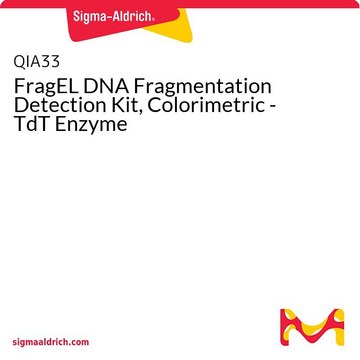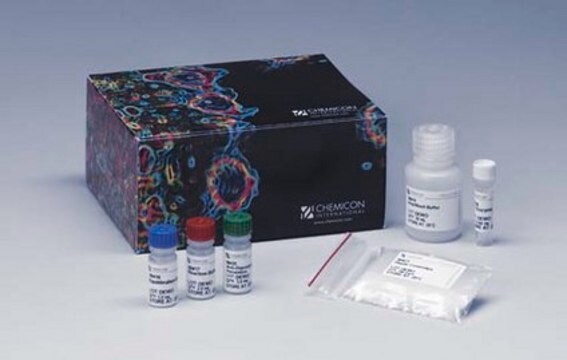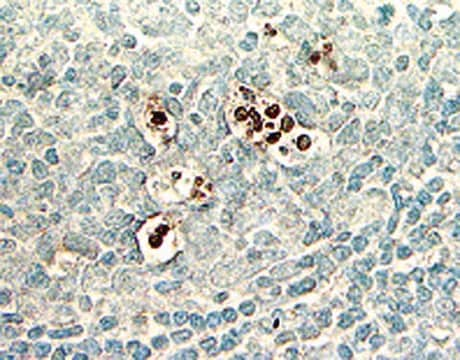QIA39
FragEL DNA Fragmentation Detection Kit, Fluorescent - TdT Enzyme
Synonim(y):
TUNEL Assay
About This Item
Polecane produkty
zastosowanie
sufficient for 50 tests
Poziom jakości
reaktywność gatunkowa (przewidywana na podstawie homologii)
all
producent / nazwa handlowa
Calbiochem®
warunki przechowywania
OK to freeze
avoid repeated freeze/thaw cycles
metody
flow cytometry: suitable
moc wejściowa
sample type cell suspension(s)
sample type frozen section(s)
sample type paraffin section(s)
sample type fixed-cell preparation(s)
metoda wykrywania
fluorometric
Warunki transportu
wet ice
temp. przechowywania
−20°C
Opis ogólny
Komponenty
Ostrzeżenie
Charakterystyka techniczna
Zasada
Przechowywanie i stabilność
Inne uwagi
Frey, T. 1997. Cytometry28, 253.
Shapiro, H.M. 1995. Practical Flow Cytometry, Third Edition. Wiley-Liss Inc., New York, New York.
Darzynkiewicz, Z., et al. 1992. Cytometry13, 795.
Gavrieli, Y., et al. 1992. J. Cell Biol.119, 493.
Fawthrop, D. J., et al. 1991. Arch. Toxicol.65, 437.
Martin, S.J., et al. 1990. J. Immunology145, 1859.
Wyllie, A. H. 1980. Nature284, 555.
Kerr, J. F. R., et al. 1972. Br. J. Cancer26, 239.
Informacje prawne
Hasło ostrzegawcze
Danger
Zwroty wskazujące rodzaj zagrożenia
Zwroty wskazujące środki ostrożności
Klasyfikacja zagrożeń
Acute Tox. 4 Inhalation - Acute Tox. 4 Oral - Aquatic Chronic 2 - Carc. 1B - Eye Irrit. 2
Kod klasy składowania
6.1C - Combustible acute toxic Cat.3 / toxic compounds or compounds which causing chronic effects
Certyfikaty analizy (CoA)
Poszukaj Certyfikaty analizy (CoA), wpisując numer partii/serii produktów. Numery serii i partii można znaleźć na etykiecie produktu po słowach „seria” lub „partia”.
Masz już ten produkt?
Dokumenty związane z niedawno zakupionymi produktami zostały zamieszczone w Bibliotece dokumentów.
Klienci oglądali również te produkty
Nasz zespół naukowców ma doświadczenie we wszystkich obszarach badań, w tym w naukach przyrodniczych, materiałoznawstwie, syntezie chemicznej, chromatografii, analityce i wielu innych dziedzinach.
Skontaktuj się z zespołem ds. pomocy technicznej












